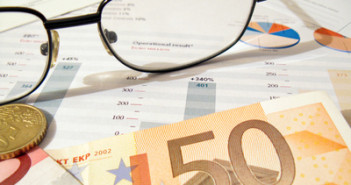EUR/USD has edged higher in Friday trading, as the pair trades in the low-1.31 range early in the European session. The pair showed little reaction to two days of testimony in Congress by US Fed chair Bernard Bernanke. Bernanke did not really add anything new in his remarks, saying that the Fed’s monetary policy would remain accommodative and QE tapering would depend on how well the US economy performs. Somewhat overshadowed by Bernanke’s testimony were two excellent releases out of the US. Unemployment Claims came in below the estimate, and the Philly Fed Manufacturing Index hit its highest level in over two years. On Friday, German PPI beat the estimate, and the markets are waiting for the release of Spanish HPI. As well, finance ministers and central bankers meet in Moscow for a G20 meeting. In the US, there’s a break in the action, with no releases scheduled on Friday.
Here is a quick update on the technical situation, indicators, and market sentiment that moves euro/dollar.
EUR/USD Technical
- Asian session: Euro/dollar moved higher late in the session, hitting a high of 1.3151, before consolidating at 1.3133. The pair is unchanged in the European session.
Current range: 1.31 to 1.3160.
Further levels in both directions:Â 
- Below: 1.31, 1.3050, 1.30, 1.2940, 1.2890, 1.2840, 1.28, 1.2750, 1.27, 1.2660 and 1.26.
- Above: 1.3160, 1.32, 1.3255, 1.3350 and 1.34.
- 1.31 is providing support, but remains weak. 1.3050 is next.
- 1.3160 is providing resistance. The round number of 1.32 follows.
EUR/USD steady as markets shrug off Bernanke testimony – click on the graph to enlarge.
EUR/USD Fundamentals
- 6:00Â German PPI, exp. -0.2%, actual 0.0%.
- Tentative – Spanish HPI.
- Day 1 of G20 Meeting in Moscow.
For more events and lines, see the EUR/USD .
EUR/USD Sentiment
- Bernanke fails to make a splash: The US Federal Reserve took over center stage this week, as Fed chair Bernard Bernanke testified before Congress on Wednesday and Thursday. Instead of fireworks or any dramatic announcements, Bernanke essentially served the same dish we’ve seen before. Bernanke said that monetary policy would remain accommodative, and that the pace of bond buys is “not on a preset course“. This rather vague statement leaves the Fed plenty of wiggle room to scale down QE should it choose to do so. Bernanke reiterated that any decision to taper QE would depend on economic conditions. He noted that present unemployment levels (7.6%) were “well above†normal levels, and shied away from presenting any time deadlines for scaling down QE. So the markets were left with the message that any tapering will be delayed until the recovery deepens and unemployment falls. There wasn’t much of a reaction from the currency markets, and EUR/USD showed only limited movement. Meanwhile, US releases looked very sharp on Thursday. Unemployment Claims dropped sharply from 360 thousand to 334 thousand, well below the estimate of 344 thousand. The Philly Fed Manufacturing Index surged, rising from 12.5 to 19.8 points. This was its best showing since March 2011, and the key indicator blew past the estimate of 8.5 points.
- German numbers a mixed bag: German numbers remain inconsistent, making it difficult to gauge the health of the Eurozone’s largest economy. On Friday, German PPI ended a nasty skid of four consecutive declines, rising to a flat 0.0%. On Tuesday, German ZEW Economic Sentiment, one of the most important German releases, was a disappointment. The indicator dropped and fell below expectations. Last week, German Trade Balance and Industrial Production both missed their estimates. It’s true that Germany is in better economic shape than its struggling neighbors, but unless there’s substantial improvement in German numbers, the Eurozone economy will have a tough time getting on the road to recovery.
- Spanish political crisis intensifies: Spain has seen its fair share of political crises, but the government certainly has all it can handle this time around. The ruling PP party find itself meshed in a political scandal which has made its way to the very top, potentially implicating Prime Minister Mariano Rajoy. The ex-treasurer of the ruling PP party has testified that he paid Rajoy and other members substantial sums from a slush fund that was funded by various companies. The scandal has been in the press for months, and is intensifying. There have been calls for Rajoy’s resignation, but analysts have noted that top level resignations by Spanish political figures are rare, as it is not part of the Spanish political culture. Rajoy, who has denied any wrongdoing, has a strong majority in parliament and is not expected to step down.
- ECB says interest rates could go even lower: The ECB continues to signal that that interest rates, already at record lows, could remain at present levels for a long time, or even move lower. The door is still open to negative deposit rates, which would likely hurt the euro. German ECB members have not hesitated to comment on this topic, and have not always been in agreement. While Bundesbank chief Jens Weidmann said that low rates are bad for the euro, his colleague Asmussen said that the extended period of time is more than 12 months. He later backtracked. In any case, the sentiment is dovish regarding rates, and this will continue to weigh on the euro.
- Recent technical analysis articles: EUR/USD Could Retest 1.3220 – Elliott Wave Forecast



